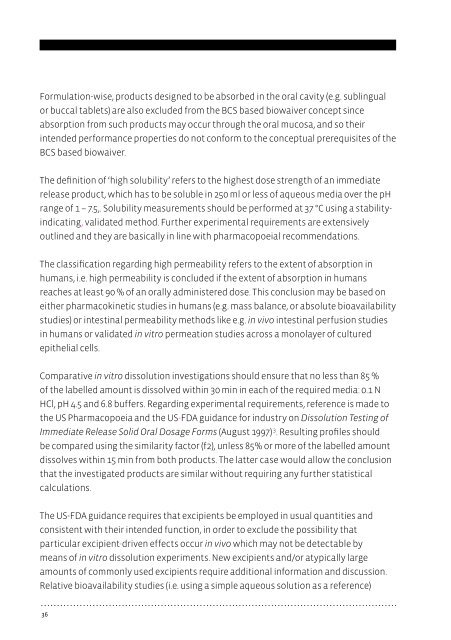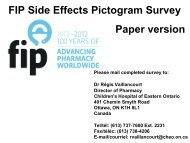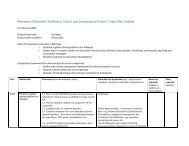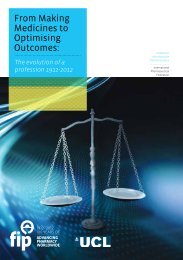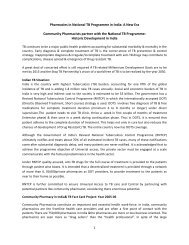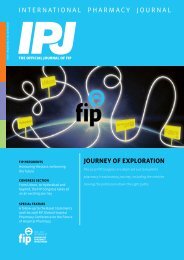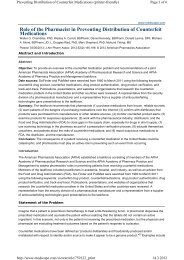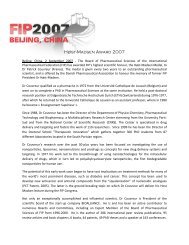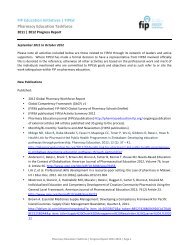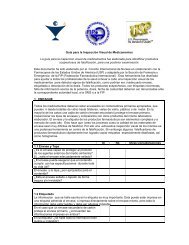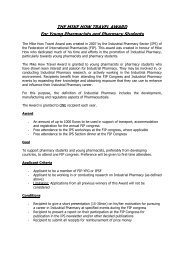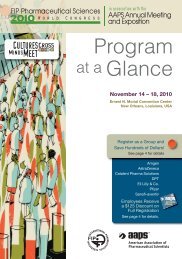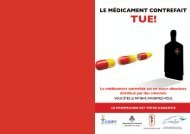THe BIOWaIVer MONOGraPHS - FIP
THe BIOWaIVer MONOGraPHS - FIP
THe BIOWaIVer MONOGraPHS - FIP
You also want an ePaper? Increase the reach of your titles
YUMPU automatically turns print PDFs into web optimized ePapers that Google loves.
Formulation-wise, products designed to be absorbed in the oral cavity (e.g. sublingual<br />
or buccal tablets) are also excluded from the BCS based biowaiver concept since<br />
absorption from such products may occur through the oral mucosa, and so their<br />
intended performance properties do not conform to the conceptual prerequisites of the<br />
BCS based biowaiver.<br />
The definition of ‘high solubility’ refers to the highest dose strength of an immediate<br />
release product, which has to be soluble in 250 ml or less of aqueous media over the pH<br />
range of 1 – 7.5,. Solubility measurements should be performed at 37 °C using a stabilityindicating,<br />
validated method. Further experimental requirements are extensively<br />
outlined and they are basically in line with pharmacopoeial recommendations.<br />
The classification regarding high permeability refers to the extent of absorption in<br />
humans, i.e. high permeability is concluded if the extent of absorption in humans<br />
reaches at least 90 % of an orally administered dose. This conclusion may be based on<br />
either pharmacokinetic studies in humans (e.g. mass balance, or absolute bioavailability<br />
studies) or intestinal permeability methods like e.g. in vivo intestinal perfusion studies<br />
in humans or validated in vitro permeation studies across a monolayer of cultured<br />
epithelial cells.<br />
Comparative in vitro dissolution investigations should ensure that no less than 85 %<br />
of the labelled amount is dissolved within 30 min in each of the required media: 0.1 N<br />
HCl, pH 4.5 and 6.8 buffers. Regarding experimental requirements, reference is made to<br />
the US Pharmacopoeia and the US-FDA guidance for industry on Dissolution Testing of<br />
Immediate Release Solid Oral Dosage Forms (August 1997) 3 . Resulting profiles should<br />
be compared using the similarity factor (f2), unless 85% or more of the labelled amount<br />
dissolves within 15 min from both products. The latter case would allow the conclusion<br />
that the investigated products are similar without requiring any further statistical<br />
calculations.<br />
The US-FDA guidance requires that excipients be employed in usual quantities and<br />
consistent with their intended function, in order to exclude the possibility that<br />
particular excipient-driven effects occur in vivo which may not be detectable by<br />
means of in vitro dissolution experiments. New excipients and/or atypically large<br />
amounts of commonly used excipients require additional information and discussion.<br />
Relative bioavailability studies (i.e. using a simple aqueous solution as a reference)<br />
36


